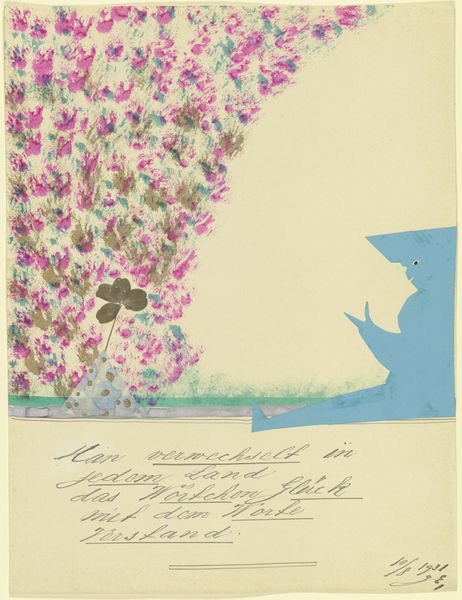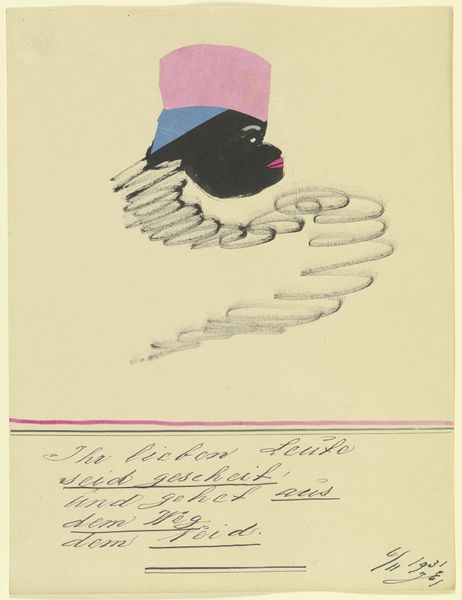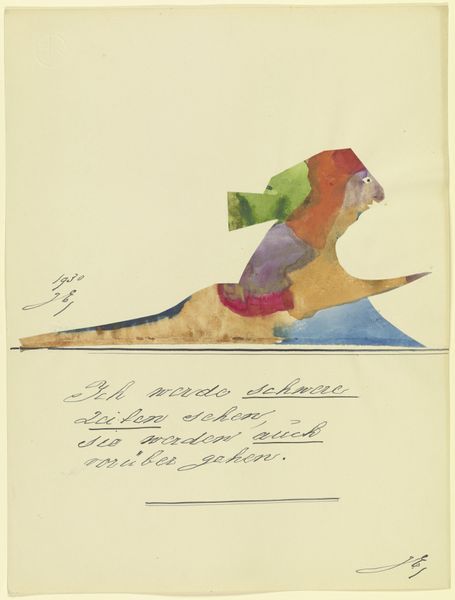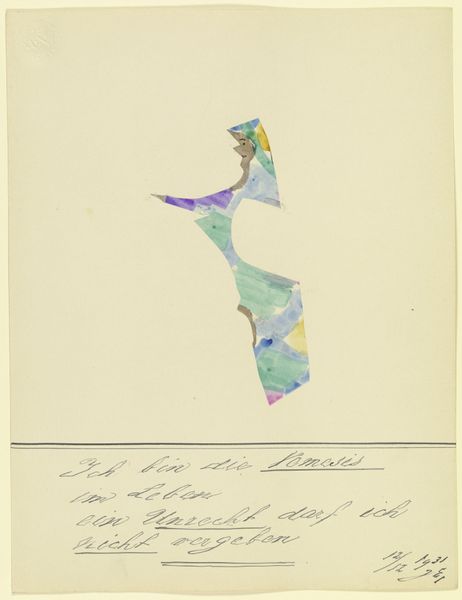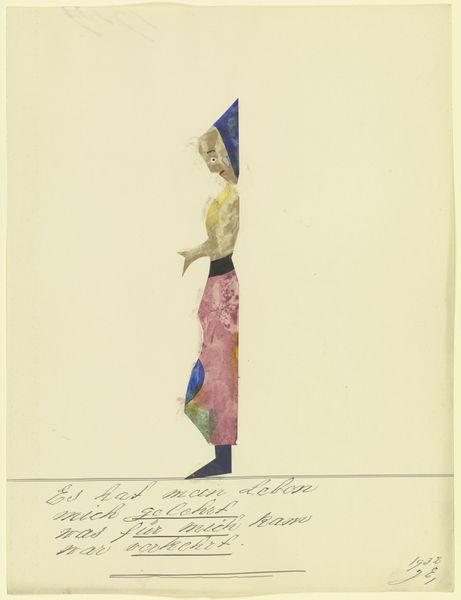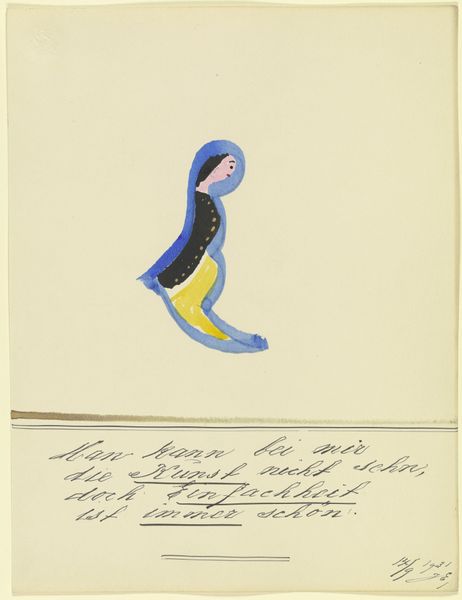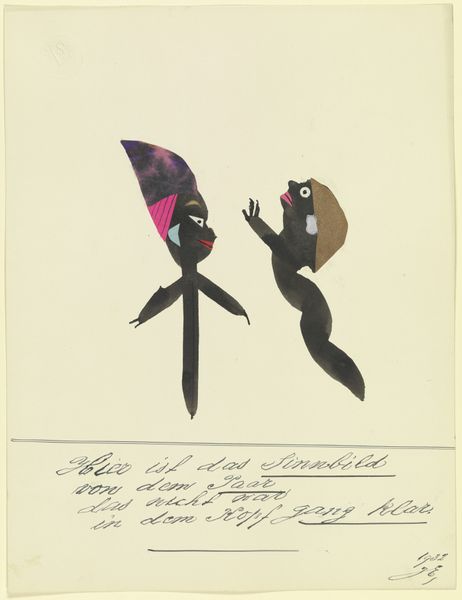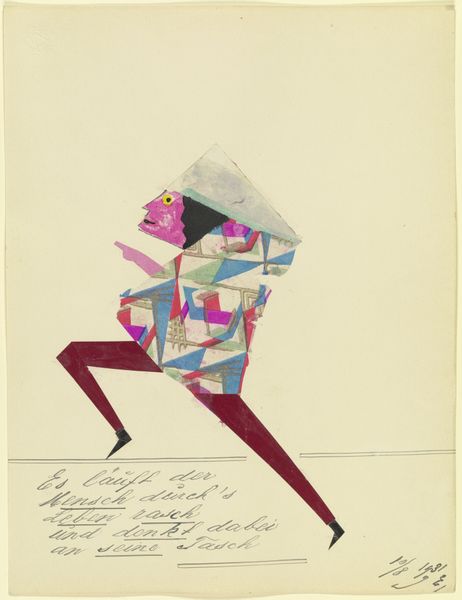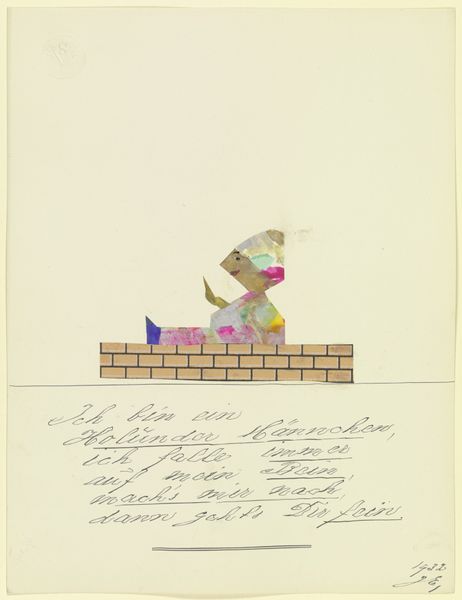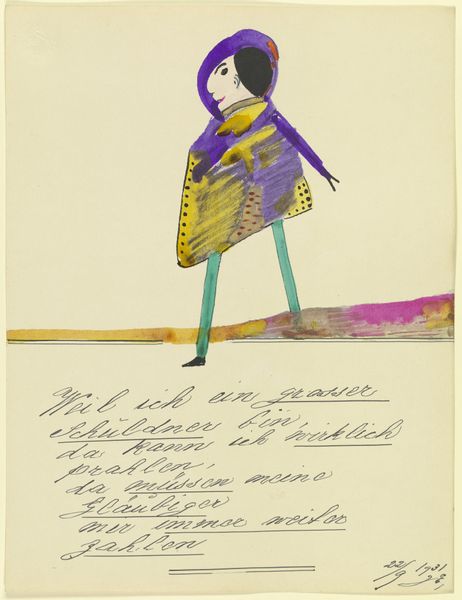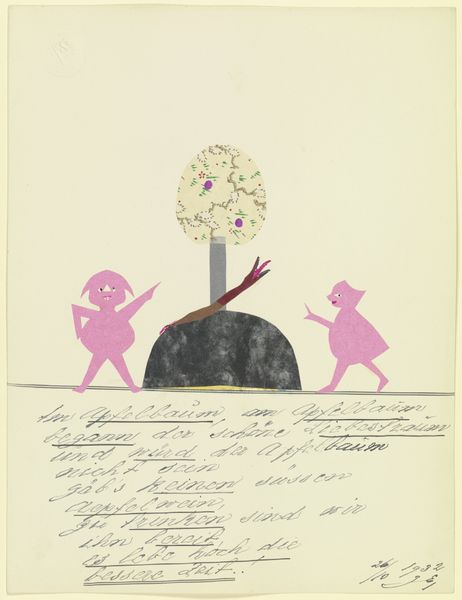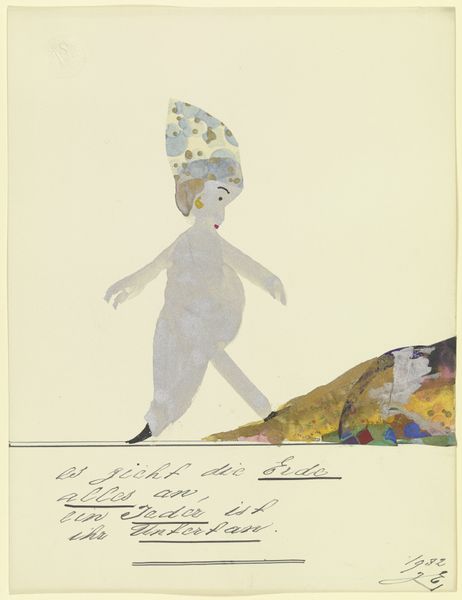
Copyright: Public Domain
Curator: I'm drawn to this intriguing piece, "17045 (‘Beachte den Sinn der Farben nur …’)" created by John Elsas in 1932. It's a vibrant collage combining drawing, gouache, watercolor, and ink on paper. What's your initial take? Editor: Striking. The first thing that grabs me is the textural juxtaposition – those smooth watercolor washes meeting the sharply defined paper cutouts. There's a tension there that speaks to the artistic process itself, the hand working with the materials. Curator: Absolutely. Elsas seems deeply interested in the symbolic possibilities of color and form. The geometric shapes that constitute the bird are not simply decorative; they imply something about how we perceive and categorize nature itself. The avian subject, typically associated with freedom, feels deliberately constrained here, rendered through artificial means. Editor: Precisely. And look closely – it's a collage! I see layers of paper, each likely with its own history, sourced perhaps from everyday ephemera. It's fascinating how the artist transforms humble materials into something evocative. It forces one to consider the economic realities embedded within these artistic gestures during that time. Curator: I agree, there is a visual metaphor to deconstruction happening. Symbolism and Art Nouveau flourish during periods of great change, often reflecting societal anxieties or dreams through highly stylized and emotionally charged imagery. I see both present here in Elsas' approach. It’s about breaking down something whole into fragments, then reassembling it, hopefully providing a richer visual text and, perhaps, a new way of thinking. Editor: So it isn’t just a beautiful, skillfully rendered piece. Elsas compels us to recognize and contemplate art's making as integral to the statement itself. I keep considering Elsas' techniques during interwar Germany, where materials might be repurposed out of necessity as well as an artistic choice, and, simultaneously, where movements emphasizing these collage processes flourished like Dada. Curator: Yes, I think this invites consideration of material access alongside emotional intention. Thank you for opening that interpretation, Editor. Editor: And thank you, Curator, for diving deep into the meaning these images have accrued and preserved. A valuable exploration!
Comments
No comments
Be the first to comment and join the conversation on the ultimate creative platform.
